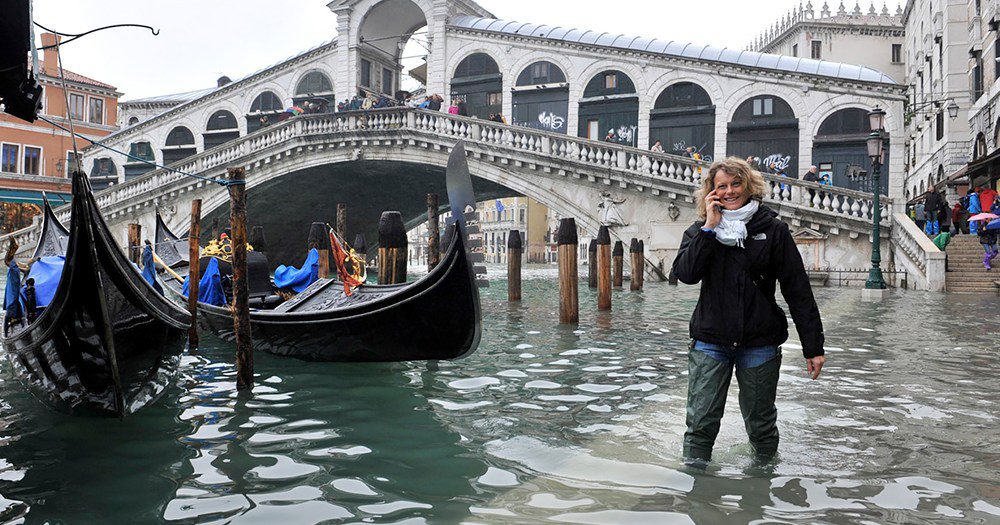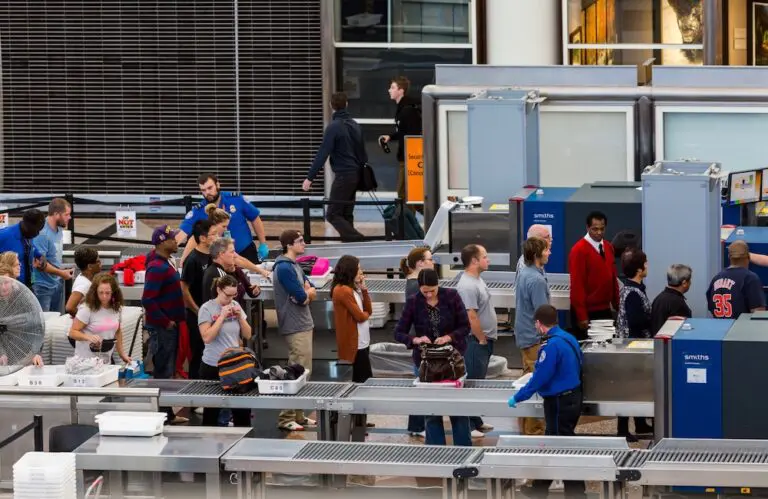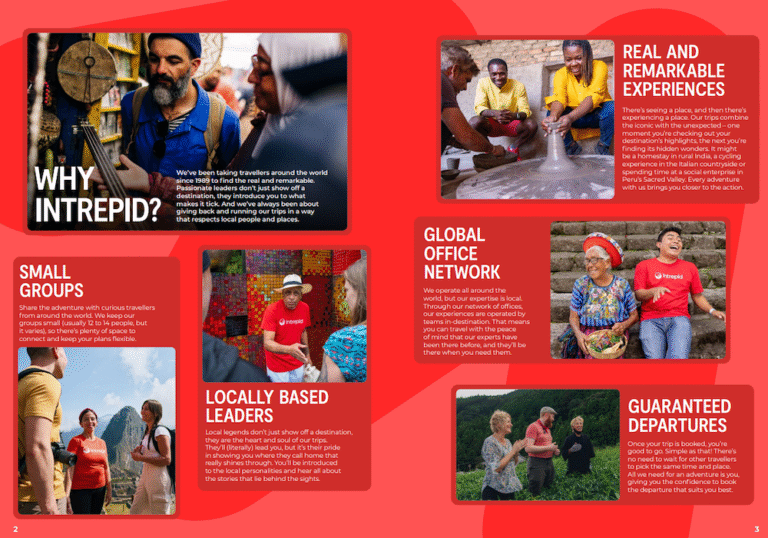The tourist hot spot of Venice is in a continued state of emergency after the city was engulfed by 1.87m high water levels, flooding its historic basilica and cutting power to homes.
Another exceptional high tide swamped Venice on Sunday, causing the tourist hotspot of St. Mark’s Square and the Basilica to close as the Italian city marked the worst week of flooding since records started officially being kept.
More than 70% of Unesco world heritage site Venice still remains underwater.
Many famous attractions have been submerged in floodwaters with flood levels reaching the second-highest level since records began in 1923 at 1.87 metres.
Two people are reported to have died and the damage is estimated in the billions with further surges causing continued destruction.
But even though officials closed down the historic square due to the rising waters, remarkably, tourists were still arriving on Sunday with many sporting plastic garbage bags and thigh-high boots to keep the floodwaters at bay.
St. Marks Square, La Fenice Theatre, The luxurious Gritti Place hotel, Ca’ Pesaro Modern Art Gallery and Pellestrina, the thin strip of land forming a barrier between the city and the Adriatic Sea along the eastern side of the Venetian Lagoon have all been impacted.
Photos of Venice Underwater: The Highest Tide in 50 Years—via @TheAtlPhoto https://t.co/FU71SqEKQG
— Krista McKibbin (@kcmckibbin) November 14, 2019
Speaking to the Washington Post, Michael Oppenheimer, a professor of geosciences and international affairs at Princeton University who has travelled to Venice extensively, warned that if Venice doesn’t complete its already-delayed coastal defence system as sea levels rise, the city will become useless as a place for people to live and to enjoy its cultural splendours.
“The threat is if Venice becomes uninhabitable by normal humans beings. One of the great things about Venice is that real people live there and go about their daily business,”
Venice’s population has already been shrinking for years, increasingly driven out by a growing number of high-tide days and the increased living costs and congestion brought on by tourists.
But climate change has a way of making the city less accessible for everyone as the very attractions tourists and locals enjoy dissolve, Oppenheimer said.
The head of the Venice hotels association said the damage was enormous, with many hotels losing electricity and lacking pumps to remove water.
According to the BBC, Salvano Nastasi, the Secretary-General of Italy’s culture ministry, told local media that the situation was “extremely complex and worrying” and a crisis unit had been established to assess the impact.
Remember in 2017, scientists were saying Venice would be under water in two years due to global warming? pic.twitter.com/O7uGBRIetq
— Lili-Rose (@fillesdouces) November 14, 2019
Meanwhile, water taxis attempting to drop people off at the historic hotels along the Grand Canal were hindered by the issue of gangways being washed away, with passengers having to clamber through windows to enter, according to The Guardian.
Venice airport said connections by water taxi remained difficult due to the “exceptional level” of the tide.
Venice flooded — in pictures https://t.co/gsdDGXc0iS pic.twitter.com/O9MIh7MXna
— Al Jazeera English (@AJEnglish) November 14, 2019
Climate change has been blamed for floods which have engulfed more than 85% of Venice.
Veneto regional council, which is located on Venice's Grand Canal, was flooded for the first time in its history on Tuesday night — just after it rejected measures to combat climate change https://t.co/3zJctNm7pW
— CNN (@CNN) November 17, 2019
Venice Mayor Luigi Brugnaro said “We ask the government to help us. This is the result of climate change,”
“Now the government must listen. These are the effects of climate change… the costs will be high.”
Venice Mayor Luigi Brugnaro





